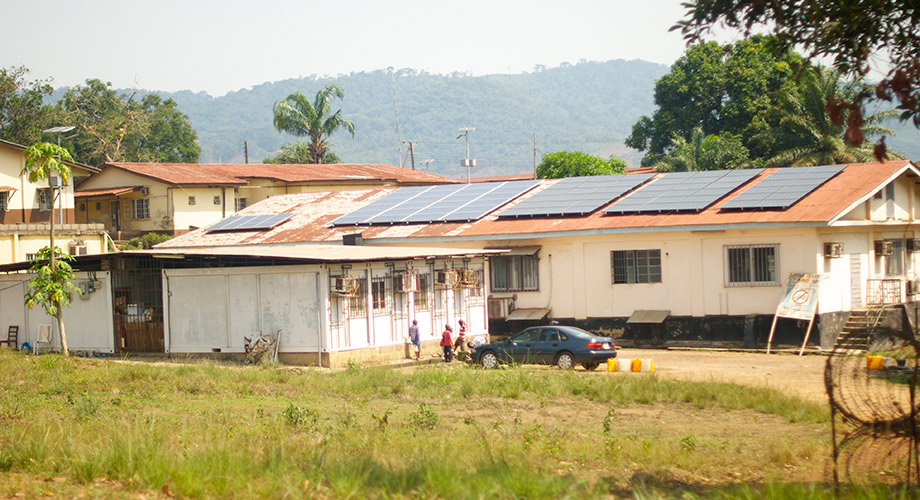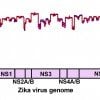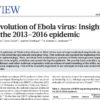Scientists at Scripps Research have received a significant grant to study the evolution and outcomes of human infections with SARS-CoV-2, Lassa virus and Ebola virus. The team will receive roughly $2.5 million each year for a maximum of five years, bringing the total potential award to $12.8 million. The funds—a grant renewal from the the National Institutes of Health’s (NIH) National Institute of Allergy and Infectious Diseases (NIAID) first awarded in 2018—will support the Scripps Research-led Center for Viral Systems Biology (CViSB) over this time.
“Since receiving the initial NIH-NIAID grant five years ago, CViSB has made tremendous progress in providing deep, system-level understanding of these viruses and the diseases they cause,” says Kristian Andersen, PhD, professor in the Department of Immunology and Microbiology at Scripps Research, as well as director and principal investigator at CViSB. “We are at the point where we have a much better grasp on these diseases at the systems biology level, meaning a more comprehensive picture of how they impact the body. It’s now time to use big data analyses to sort through the immense amount of information we collect and reveal how these viruses are rapidly changing on a global scale.”
With support from the grant, Andersen and his colleagues will continue to study the functional evolution of these viruses and investigate why some people have more severe responses to infection than others. For example, one of the center’s major areas of focus will be uncovering the immune system markers that would signal if a person is at risk for contracting severe COVID-19, while also understanding how SARS-CoV-2 virus is changing across the global population. Additionally, the team will determine how factors such as climate change, population expansion and deforestation will impact viral threats like Lassa and Ebola.
“For these three viruses, we are striving to answer similar questions: Why is it that only certain people have a more severe disease response? From an immunity standpoint, how does receiving a vaccine compare to recovering from an infection? And finally, can we track and predict how these viruses will evolve over time?” Andersen adds.
In addition to scientists at Scripps Research, CViSB also includes researchers from Tulane University, UC Los Angeles, Massachusetts Institute of Technology, the Viral Hemorrhagic Fever Consortium and Kenema Government Hospital in Sierra Leone. This coalition uses a combination of genomic technologies, physiological testing, computational biology and high-throughput tools to determine what enables infected individuals to better fight viruses. By characterizing these molecular, physiological and immunological networks, CViSB aims to identify new targets for medicines and vaccines, as well as inform more personalized treatment decisions.
“In integrating numerous technologies at the intersection of computational biology, genomics and immunology, the CViSB team is uniquely positioned to reveal how our immune systems evolve with respect to these viruses in real-time,” says Bryan Briney, PhD, associate professor at Scripps Research and lead, Technology Core at CViSB. “Additionally, by making these data and software tools available to the public, we hope to engage the larger infectious disease community and solve these global issues even faster.”
Since receiving the initial NIH-NIAID grant, CViSB has developed some of the most widely used tools, open-source software systems and online resources to track viral trends and spread—many of which are employed by U.S. government agencies like the CDC and FDA. These include iVar (a software package used to assemble viral genomes), Freyja (a wastewater analysis system), as well as Outbreak.info (an online resource that tracks SARS-CoV-2 variants using sequencing data repositories). CViSB has also published hundreds of papers on virus evolution, biomarkers of infection, and immunity including in Science, Nature and Cell.
“We have witnessed firsthand the devastating, global impact of these viral outbreaks—and especially where data gaps hinder efforts to quickly and effectively combat them,” says Laura Hughes, PhD, institute investigator in the Department of Integrative Structural and Computational Biology at Scripps Research, as well as the lead, Data & Bioinformatics Core at CViSB. “CViSB has already made significant strides in better tracking and understanding these public health threats in real-time, and we look forward to working hand-in-hand with our partners to ultimately help identify better targets for vaccines and other treatments.”
Over the next five years, Andersen, Briney, Hughes and the rest of the CViSB team will continue to leverage their expertise in genomic analysis and data science to uncover different biomarkers for severe disease and better understand host-pathogen interactions.








